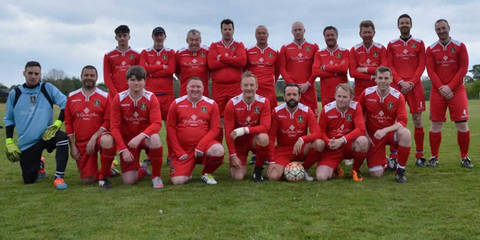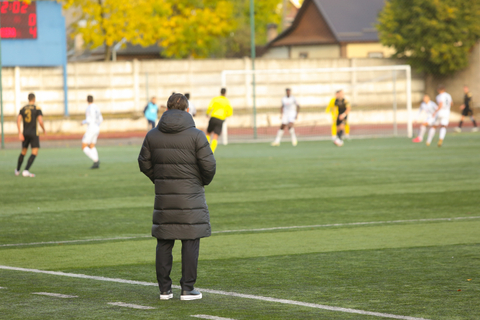Skeletal tracking has long since moved beyond scientific laboratories and analytics for coaching staff. Today, it is one of the key technologies shaping new standards of refereeing in football. It adds accuracy, reduces pause time, and minimizes room for human error, thus making the game fairer and more transparent for fans, clubs, and the players themselves.
From GLT to SAOT, a brief history of a dramatic leap
Ten years ago, the limits of technological influence on refereeing in football seemed relatively clear. Hawk Eye debuted Goal Line Technology in 2015. It could tell in a split second whether the ball had fully crossed the goal line. This answer was the least that was needed; it didn’t modify the logic of other choices, but it made sure that everything was correct at the most important time.
This is where skeletal tracking came into play, opening up the possibility of mathematically determining the position of a player’s body at a specific moment, and thus making offside decisions much faster and less controversial. Football remains exciting and spectacular precisely because of these razor-thin moments. During break, fans can get a $20 NZ no deposit bonus in Auckland and try football-themed slots, keeping the adrenaline high while technology makes on-field decisions faster and fairer.
Then came VAR, a video replay system that brought a new level of review to the field. The video assistant reduced the number of obvious mistakes, but left the problem of time and interpretation. People still had to review replays, interpret the rules, and correlate the positions of the players and the moment of the pass.
Why ball tracking alone is not enough
Football has consistently strived to automate tasks that are easily measurable. The ball has clear coordinates, it can be tracked in real time using cameras or sensors, and this is sufficient for decisions such as GLT. However, determining offside presents a unique challenge. Not only the size of the ball, but also the shape of the person in space is important.
Beyond the two defenders and the ball, certain portions of the player’s body must extend farther away from the other team’s goal line. This is called being offside. It is impossible to determine this with sufficient accuracy using a single point, such as the center of mass of the body. A detailed model of each player’s movement is required, and this is exactly what skeletal tracking provides, as it has long been used in the Premier League.
How SkeleTRACK works and why it is the new standard for accuracy
SkeleTRACK from Hawk Eye captures highly accurate movement data for each player using a network of 10–14 specialized cameras placed around the perimeter of the stadium. The system keeps track of 29 important locations on the human body, so it can tell exactly which section of the body was ahead at the time of the pass.
In real life, this implies going from hundreds of thousands to hundreds of millions of data points in a single match. This makes the analysis much more detailed and, as a result, the choices much more accurate. Most systems today can handle about 600,000 data points per team. Skeletal monitoring, on the other hand, increases the threshold to over 172 million.
After pilot stages and testing, the technology has been part of the highest tournaments since 2022. It works in conjunction with a semi-automated offside detection system, combining ball and player tracking for quick, often split-second decisions. The shorter the pause, the less the rhythm of the game is lost, and the more confidence there is in the result.
From GLT to VAR and SAOT, the logic of transitions in three steps
The key stages in the evolution of technology in soccer appear to be sequential, starting with Goal Line Technology, followed by VAR, and then Semi Automated Offside Technology based on skeletal tracking. Below is an overview of how each tool addressed its part of the problem of accuracy and speed of refereeing.
-
GLT made it possible to unambiguously determine the fact of a goal, which eliminated dramatic mistakes on the line.
-
VAR connected humans to machines, and video replays helped review controversial episodes, but the problem of long pauses and subjectivity remained.
-
SAOT and skeleton tracking improved precision and speed, giving referees a tip in seconds and showing spectators where the offside line was and which body part breached the rule.
Speed versus errors: how SkeleTRACK helps referees
No matter how hard the assistants on the line try, the human eye is unable to perfectly synchronize the moment of transmission and the exact position of 29 body parts of several players at the same time. SkeleTRACK fills this gap. In real time, without delay, it generates data that SAOT converts into clear, repeatable decisions. As a result:
-
The number of tracked body points goes up, which gets rid of big mistakes in the center of mass;
-
Decision-making time is reduced, so the match does not lose momentum;
-
The number of controversial episodes is reduced, as every frame and every coordinate can be reconstructed;
-
Trust in VAR increases, as the technology supports decisions with objective metrics;
-
The work of the refereeing team is made easier, as they receive accurate prompts rather than just recommendations to review a moment?
Mathematical transparency as the foundation of trust
Any technology in sports is evaluated not only for its accuracy, but also for how understandable and fair it is to all interested parties. Skeletal tracking and SAOT make models of events that can be used by anyone.
If necessary, they can be displayed in 3D to explain decisions in milliseconds. This increases transparency, removes accusations of selective interpretation, and allows journalists, coaches, and fans to evaluate episodes based on coordinates rather than intuition.
What’s next: algorithms that recognize more than just offside
The joint development vector of Hawk Eye and FIFA is aimed at automating an increasingly wider range of game events. The issue of offside has already been practically resolved from a technological point of view. Next up are fouls, collisions, handballs, and simulations.
If the system sees 29 points on each player’s body, it can simulate acceleration, change of direction, and the nature of contact, and thus draw conclusions about the likelihood of a foul and its intensity. Such algorithms do not replace the head referee, but provide him with a diagnostic tool that works quickly, consistently, and without emotion.
Conclusion
Skeletal tracking has moved refereeing in soccer from limited video reviews to detailed, mathematically verified analysis. SAOT, based on SkeleTRACK, has already become the de facto gold standard for offside decisions at the highest level. Next, we can expect the automation of a wider range of events, the optimization of algorithms for detecting contacts and fouls, even faster decisions, and fewer disputes.
The main thing is that not only the referee benefits from this, but also the game itself, which maintains its pace, fairness, and clarity. In a world where milliseconds and centimeters are worth a goal, skeletal tracking is becoming the tool that turns discussions into facts and doubts into transparent, verified decisions.


















